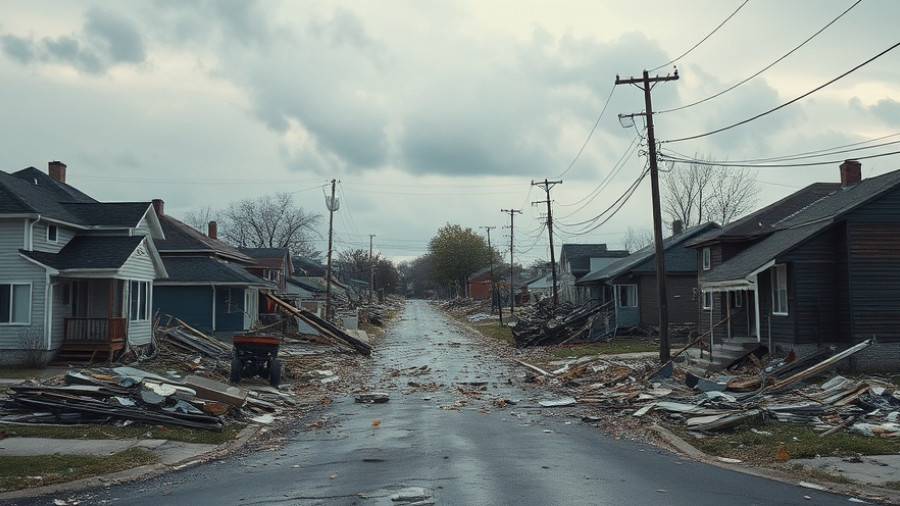
The Impending Impact of Super Typhoon Ragasa
As Super Typhoon Ragasa heads toward Hong Kong, it's poised to unleash widespread destruction in both the Philippines and China. With winds reaching 143 mph, this storm represents a significant threat to infrastructure and human life. Residents must prepare for its impact not just in terms of physical safety but also regarding property damage and potential insurance claims that may arise due to the storm's devastation.
Understanding Insurance Implications Following Typhoon Damage
For vehicle owners and homeowners alike, the ramifications of such a natural disaster can be particularly daunting. When Ragasa makes landfall, those affected should be prepared to navigate the intricacies of the insurance claim process. Knowing how to proceed following damage is essential. Typically, you will begin by documenting the damages thoroughly—photos and detailed lists can be invaluable. It’s also wise to review your homeowners' or auto insurance policy to understand what types of damage are covered. For those in Hong Kong, where government structures already face strain from previous cyclones, staying informed about your coverage against typhoon damage is paramount.
Preparing for the Claims Process Post-Typhoon
As the storm approaches, residents may find themselves scrambling not only to secure their properties but also to prepare for the aftermath, if damage occurs. Critical steps include contacting your insurance adjuster immediately after the storm passes. Be aware that the disruptions will likely cause a backlog of claims, and understanding a clear claims timeline can help you remain patient and organized.
The Importance of Documentation
Keep meticulous records of all correspondence with insurers, and make sure any damages related to the storm—as opposed to pre-existing wear—is clearly detailed. This includes obtaining an official report of the typhoon from the Hong Kong Observatory to bolster your claim. If your claim is denied, be prepared with a counterclaim backed by documentation. Here are a few tips for effective claim negotiation: be persistent, understand your policy's limitations, and leverage the expertise of legal professionals if necessary.
Evacuations and Damage Preparedness
More than 10,000 people have already been evacuated from the northern Philippines, with Hong Kong soon to follow suit. This urgent displacement underscores the need for emergency preparedness, not only in protecting physical assets but also in evaluating property damage claims and knowing how to file a claim efficiently to avoid delays. In times of crisis, being informed is as critical as being prepared.
Tips for Vehicle Damage Claims
If your vehicle suffers damage during Ragasa, consider these essential steps: immediately document the damage with photos and take notes about conditions during the storm. Understanding your rights in the car accident claim process becomes vital here. Check if events are covered under comprehensive insurance and ensure you’re ready to deal with the insurance adjuster once it’s safe to do so. The key is being proactive rather than reactive.
Future Preparedness: Lessons Learned from Past Typhoons
Super Typhoon Ragasa will mark the 11th tropical cyclone for Hong Kong this year, indicating a concerning trend that emphasizes the need for long-term resilience strategies against extreme weather events. Thinking ahead, residents should evaluate their insurance coverage annually and be ready to adapt their policies to cover emerging risks.
In conclusion, as you brace for the impending typhoon, remember that preparedness extends beyond securing your home—it involves a thorough understanding of your insurance claims process and strategizing how to manage potential property damage efficiently. Knowledge is power, especially when negotiating a fair settlement after a storm. Be proactive, and protect your rights to ensure you recover successfully from the aftermath of Ragasa.
 Add Row
Add Row  Add
Add 




Write A Comment